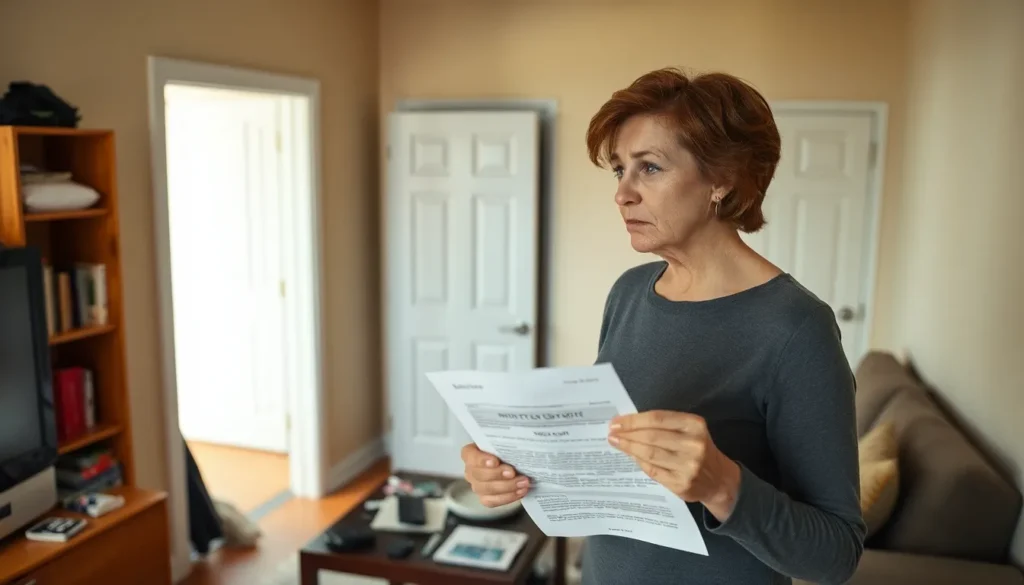Table of Contents
ToggleWhen it comes to the housing market, the Federal Reserve plays a role that’s more crucial than a cat in a room full of laser pointers. With interest rates and monetary policy in its hands, the Fed can make homebuyers feel like they’re on a roller coaster—thrilling but a little terrifying. Understanding how the Fed impacts housing can help navigate these unpredictable waters.
As mortgage rates fluctuate and housing prices soar, it’s easy to feel overwhelmed. But fear not! By unraveling the relationship between the Federal Reserve and the housing market, homebuyers and investors can make informed decisions. So buckle up and get ready to dive into the fascinating world where central banking meets cozy living rooms.
Overview of the Federal Reserve
The Federal Reserve plays a crucial role in the U.S. economy. Its influence significantly impacts the housing market through interest rates and monetary policy.
Mission and Objectives
The Federal Reserve’s primary mission centers on promoting maximum employment, stabilizing prices, and moderating long-term interest rates. These objectives directly affect homebuyers, as interest rates influence mortgage costs. In managing inflation, the Fed aims to maintain price stability, thus fostering a predictable economic environment. Enhancing financial system stability also forms a critical part of its mission, reducing risks that might impact housing investment. By achieving these goals, the Federal Reserve seeks to ensure a healthy economy, which in turn supports a robust housing market.
Structure and Governance
The Federal Reserve operates with a unique structure comprising a Board of Governors and 12 regional Federal Reserve Banks. Located in Washington D.C., the Board of Governors oversees the entire system, ensuring policy implementation aligns with national economic goals. Regional Banks serve as vital local branches, gathering economic data and providing insights into regional housing markets. Each President of a Regional Bank participates in discussions about monetary policy, contributing valuable information on local economic conditions. The combined efforts of the Board and regional institutions enhance the Federal Reserve’s capacity to monitor and respond to housing-related challenges effectively.
Federal Reserve Policies Affecting Housing
Federal Reserve policies significantly shape the housing market through various mechanisms, influencing homebuyers and investors alike.
Interest Rates and Mortgage Accessibility
Interest rate adjustments directly affect mortgage accessibility for potential buyers. Lower interest rates generally create favorable conditions for borrowing, leading to increased home purchases. Conversely, higher rates can suppress demand, making it challenging for buyers to secure loans. The Fed’s manipulations of the federal funds rate often create ripples throughout the mortgage market. As mortgage rates fluctuate, homebuyers must adapt their strategies, carefully assessing their ability to commit to long-term mortgages. Increased borrowing costs can hinder affordability, thus affecting the overall housing market dynamics.
Quantitative Easing and Housing Market Impacts
Quantitative easing (QE) plays a critical role in shaping housing market conditions. By purchasing mortgage-backed securities, the Federal Reserve injects liquidity into financial markets, which lowers interest rates. This process stimulates demand for housing, making it more accessible for many buyers. Enhanced affordability often leads to rising home prices, as increased competition drives up costs. Moreover, QE can result in greater investor interest, pushing rental and purchase prices further upward. Consequently, the interplay between QE and housing markets requires careful observation, particularly as economic conditions evolve.
The Role of the Federal Reserve in Economic Crises
The Federal Reserve plays a pivotal part during economic crises, particularly affecting the housing market.
2008 Financial Crisis and Housing Bubble
The 2008 financial crisis significantly stemmed from a housing bubble that burst. Factors like subprime mortgages and excessive risk-taking led to increasing foreclosures. As home prices plummeted, the Fed intervened with aggressive interest rate cuts and quantitative easing. Lowering the federal funds rate to near zero aimed to stimulate the economy and stabilize the housing market. It supported homebuyers by making mortgage loans more affordable. Additionally, the purchase of mortgage-backed securities injected liquidity into the markets. This response intended to revive confidence among lenders and homebuyers alike.
Response to the COVID-19 Pandemic
The Federal Reserve’s actions during the COVID-19 pandemic reflected a swift and robust response to economic challenges. It reduced interest rates again, bringing them close to zero to mitigate the impact on housing demand. Furthermore, the Fed implemented a variety of monetary policy tools to enhance liquidity. Programs aimed at supporting mortgage markets enabled banks to continue lending to homebuyers. Increased inspections for creditworthiness and reduced rates contributed to a surge in housing activity. Consequently, many individuals seized the opportunity to invest in homes, which drove prices up significantly.
Current Trends in the Housing Market
The housing market reflects ongoing shifts influenced by the Federal Reserve’s policies. Home prices and rental market dynamics showcase these changes.
Home Prices and Affordability
Recent data indicates median home prices increased by 15% from December 2020 to December 2021, impacting affordability significantly. Many homebuyers encounter challenges as rising prices outpace wage growth, causing a lower percentage of income dedicated to housing costs. A recent study shows nearly 30% of Americans believe homes are unaffordable, raising concerns about market accessibility. This situation necessitates heightened awareness among potential buyers regarding their financial capacity and planning strategies. Lower mortgage rates that were available in previous years contributed to increased competition, which further drives prices upward. Adjustments in interest rates might offer additional pressure on affordability, leading to shifts in buyer behaviors across the market.
Rental Market Dynamics
The rental market shows its own set of trends in response to economic conditions and the Federal Reserve’s actions. A 10% rise in average rental prices noted from early 2020 to 2022 demonstrates heightened demand for accessible housing. Consequently, this situation pressures tenants seeking affordable options, as many adapt to rising costs. Local markets also vary significantly; some urban areas experience more substantial increases in rent than suburban counterparts. Increased construction of multifamily housing units in response to demand aims to alleviate pressure on the rental market. Lower vacancy rates, currently at around 5%, contribute to competitive environments for renters. These factors highlight the importance for renters to stay informed on market changes as they navigate their housing options.
Understanding the Federal Reserve’s impact on the housing market is essential for anyone looking to buy or invest in property. The interplay between interest rates and housing prices shapes the landscape significantly. As the Fed navigates economic challenges and implements monetary policies, homebuyers must remain vigilant and adaptable.
With rising home prices and fluctuating mortgage rates, staying informed allows individuals to make smarter financial decisions. Whether considering a purchase or evaluating rental options, recognizing the Fed’s influence can empower buyers and renters alike. By keeping a pulse on these dynamics, they can better position themselves in an ever-evolving housing market.







